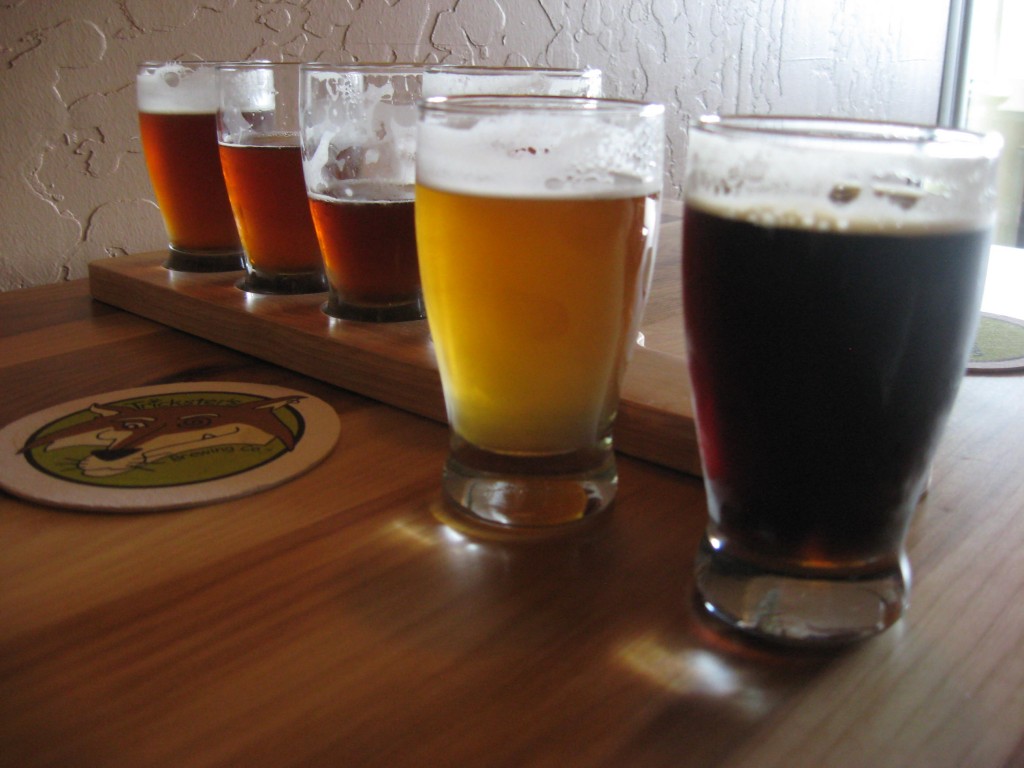
Southern Star Brewing
Conroe, Texas
Profile by Ken Carman
Remember what I wrote last time about trying to describe one drop in a rainstorm? Well, that is indeed de do a lot like trying to describe one beer at The Bluebonnet: competition in Texas. After all the judging, the tasting, the judging, the pub crawling and tasting again, taste buds don’t just go on overload: they hold up little signs and scream, “Stop, for criminy’s sake: can’t taste a ruddy thing!”
Do we listen? Hell, no.
One beer that stood out, in a good way, was Buried Hatchet Stout.
Let’s clear up a few misconceptions here, one promoted by the brewer. There is no “Strong Stout” category. Imperial? This didn’t seem to be that, although if the 8.5abv their site claims is accurate… it’s an incredible achievement. That is low Imperial Stout territory. Doesn’t seem that high at all. Like I just typed: an achievement. It may have just a tad too much chocolate malt, since the “dark” and the flavor of a true Dry or Foreign Stout is driven by roasted barley, and a Sweet Stout usually by lactose. Chocolate malt can make a stout a bit malt sweet. though this is so minor to still be quite marvelous. No Chocolate malt? Well, something else then. Hmmm…. site says “Brown malt.” That might explain it too. What, no roasted barley? That explains my style concerns I expressed right off the bat. Note to brewers: add roasted barley for “Stout” category, please. It could use at least a smidge for balance, Stout-wise; or a smidge more if your “roasted malt” actually was supposed to be “roasted barley.” “Roasted malt” means squat. It’s all “roasted” to a certain extent; if just to dry it out… a matter of how much and how it’s done.
Since it came straight from the can and my sample glass was far away I didn’t see the head or clarity. It seemed to pour just a little light on the dark side of a stout, but liquid in that close proximity to the lips isn’t the best way to judge such things. Mouthfeel? Light on the carbonation, a bit malty with a slight touch of hops: correct style from what I remember. In other words: not all that Cascade-y or other more American IPA-type hops. Perhaps a touch of the Fuggles? The site says “Saphir” hops, a noble-type. Seemed just a tad more Brit to me. Though not as “earthy,” that slight Fuggles citrus sense was there, which makes since since Fuggles and Cascades are related: like parent to more wildly citrusy son. Hatchet didn’t fill the mouth as much as it begged to be buried by an eager swallow. But the taste: refreshing, tingling, exciting. From the can I felt like I had been lying under the fermenter and someone opened it after all the yeast and gunk had been drained.
Not sure the style. Not quite a dry, not a sweet, foreign… hell, no. Imperial? I expect more from an Imperial, which most likely explains why they didn’t call it that. But quite the pleasing quaff no matter what.













You must be logged in to post a comment.